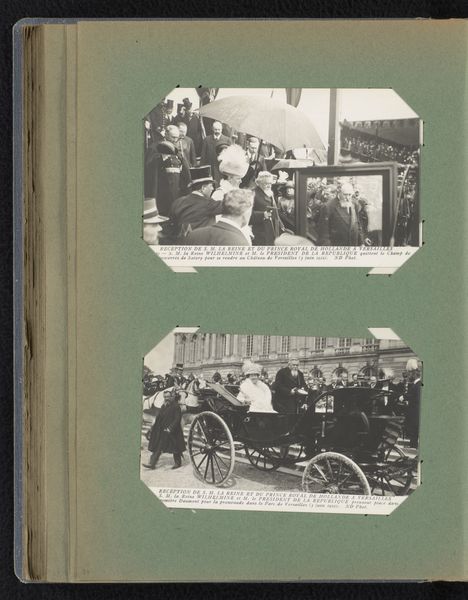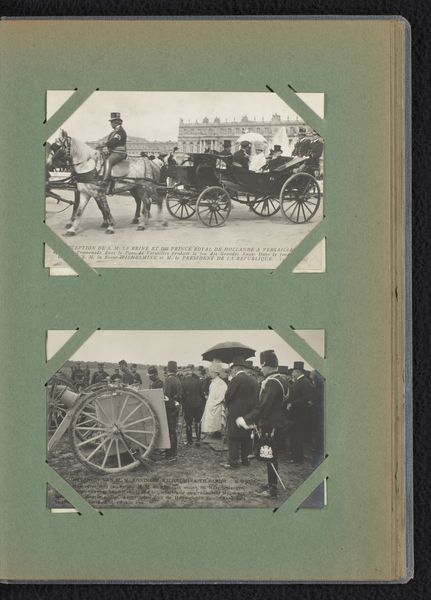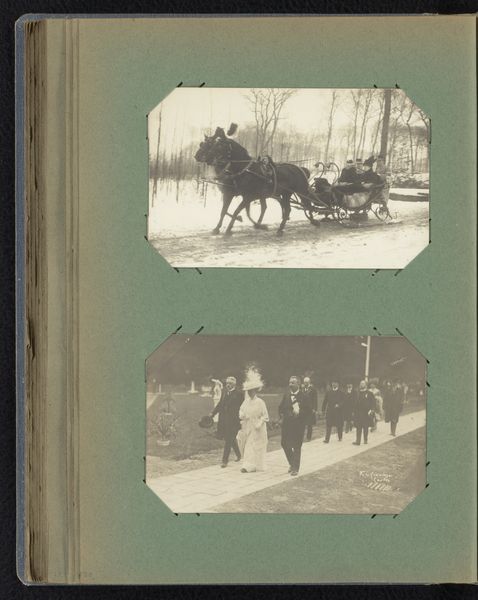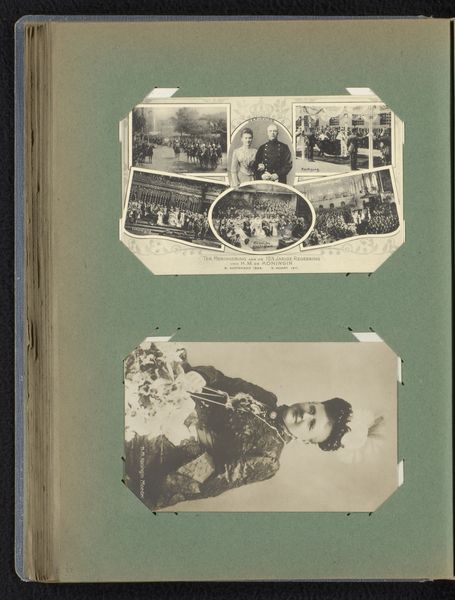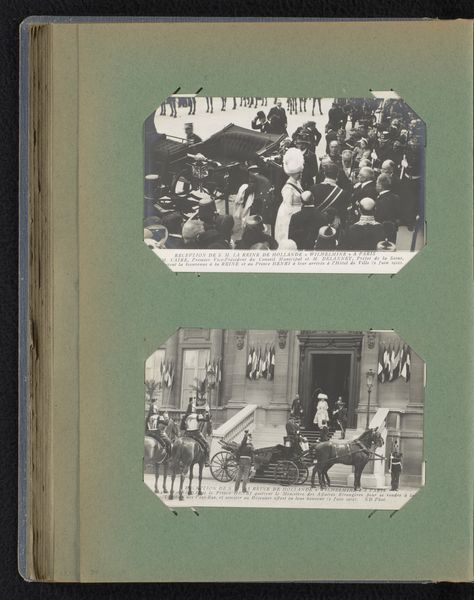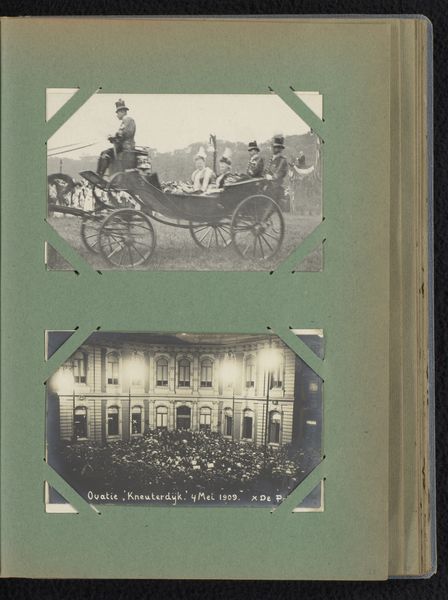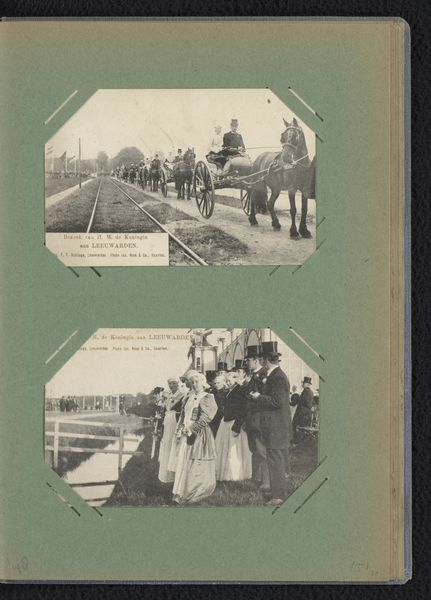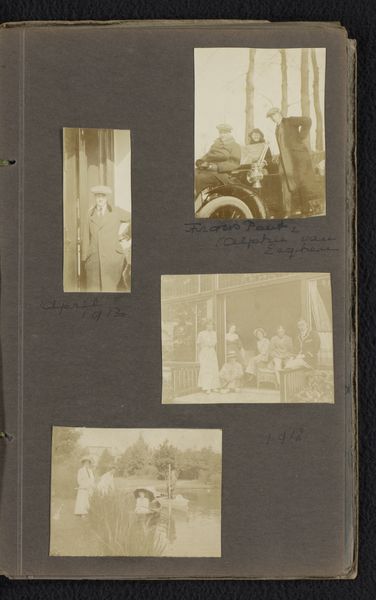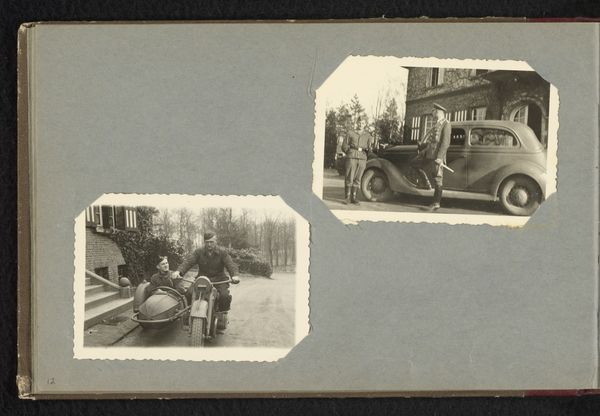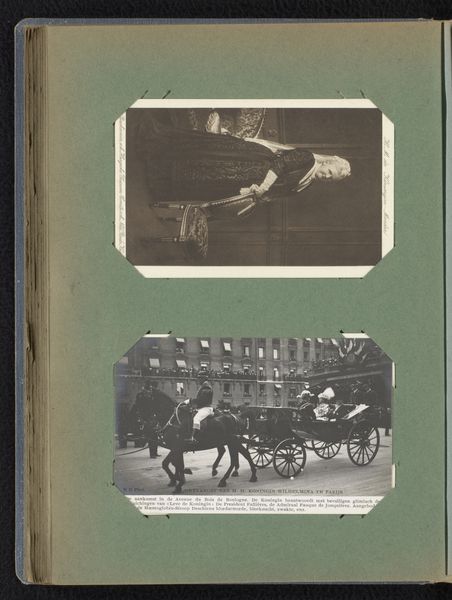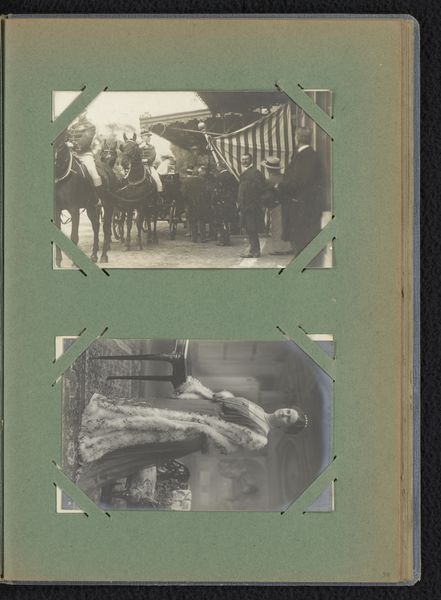
Twee prentbriefkaarten van het bezoek van koningin Wilhelmina en prins Hendrik aan Versailles Possibly 1912 - 1916
0:00
0:00
print, photography, gelatin-silver-print
# print
#
photography
#
historical fashion
#
gelatin-silver-print
#
history-painting
Dimensions: height 90 mm, width 140 mm
Copyright: Rijks Museum: Open Domain
Curator: These two gelatin-silver prints, attributed to Neurdein Frères, possibly created between 1912 and 1916, capture Queen Wilhelmina and Prince Hendrik’s visit to Versailles. What strikes you first about them? Editor: A stark reminder of how intertwined royalty is with historical theatre. The composed order feels... performative. Rigid even. Curator: Indeed. Versailles, steeped in the history of French monarchy and revolution, serves as a deliberate stage. We see one image of the royal couple in their carriage. The second captures the arrival of Queen and Prince on a large stairwell. What purpose did it serve in early twentieth-century Europe to make these public gestures of royal power? Editor: For Wilhelmina, who navigated turbulent times of shifting national identities and an approaching World War I, these carefully managed public appearances sought to legitimise the monarchy's position, visually affirming its strength and continuation amidst immense social upheaval. It underscores how powerful symbolic images are wielded, especially during uncertainty. Curator: Consider the fashion on display; Wilhelmina and Hendrik, surrounded by military and government personnel dressed impeccably, signal a return to conservative aesthetics amid emerging modernist trends. The black and white photography gives it an old-fashioned aesthetic that may further associate their reign to that of older monarchs. It emphasizes tradition but perhaps even at a price. Editor: Absolutely. And observing their placement, their physical elevation both within the carriage and especially seated at the stairwell surrounded by other men, subtly enforces gender and class hierarchies. The photographs frame them, quite literally, at the top. Curator: It's fascinating how these ostensibly straightforward photographic records operate as strategic image management. The use of such staged encounters reveals a considered engagement with popular culture, and journalism as it continued to flourish across Europe. The image would later transform into two picture postcards, further emphasizing that dissemination was also key in the early 20th century. Editor: They’re not just passively recorded events; they're active political declarations. They remind us of the potency of visual communication when it comes to constructing narratives about nation, power, and legacy. Curator: Ultimately, it offers us a revealing glimpse into monarchy as performance art. Editor: And it demands a critical awareness of the calculated gestures shaping national identity.
Comments
No comments
Be the first to comment and join the conversation on the ultimate creative platform.
